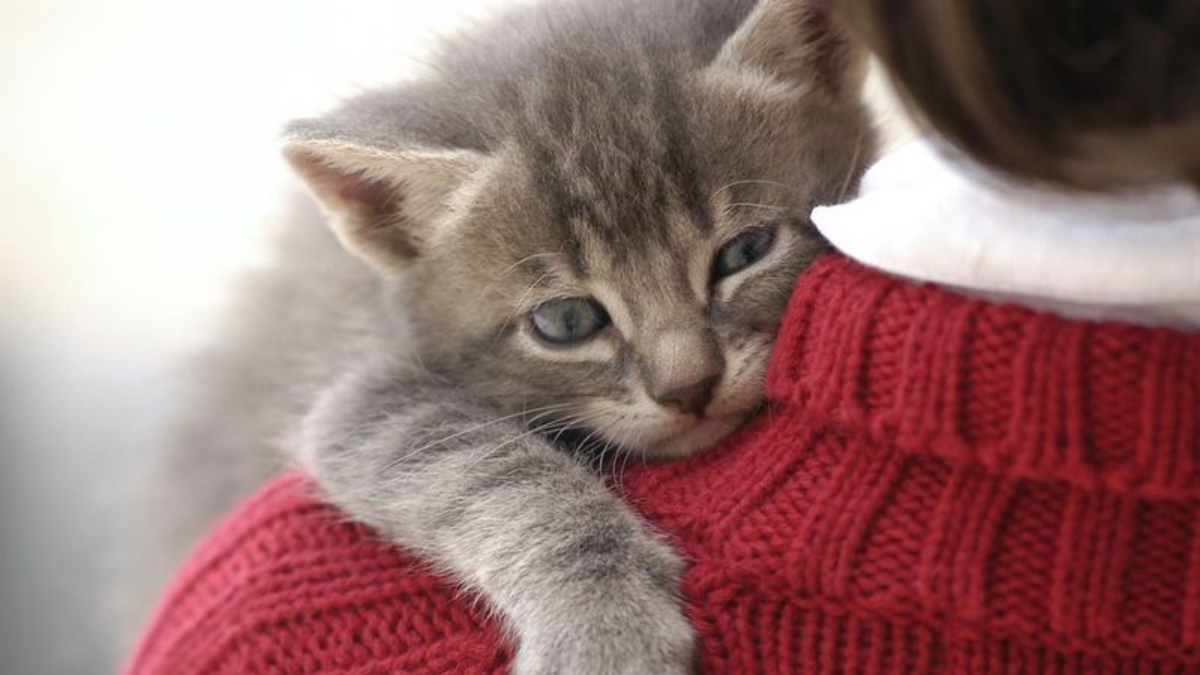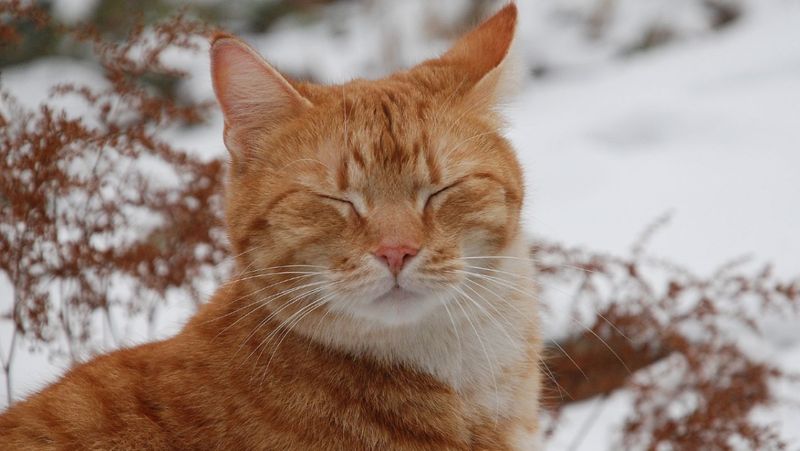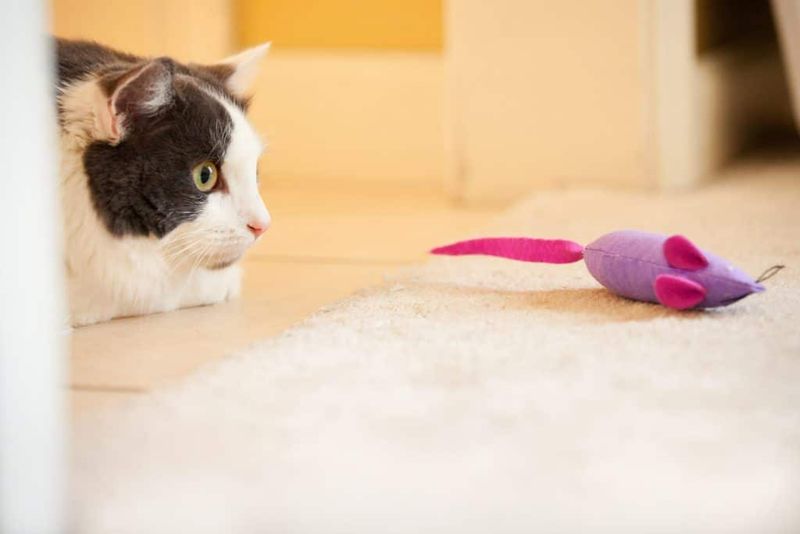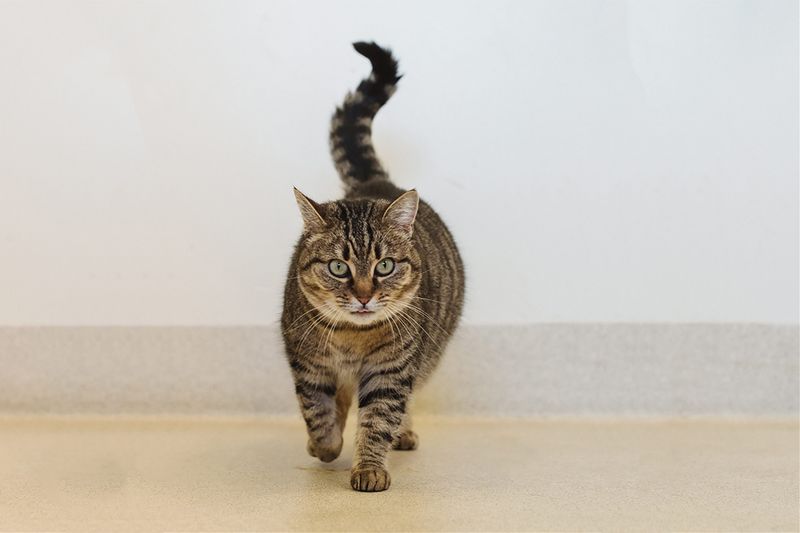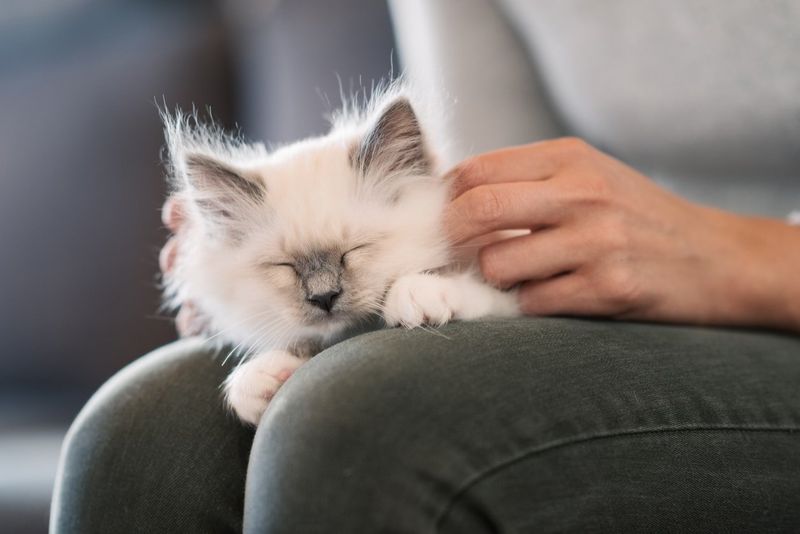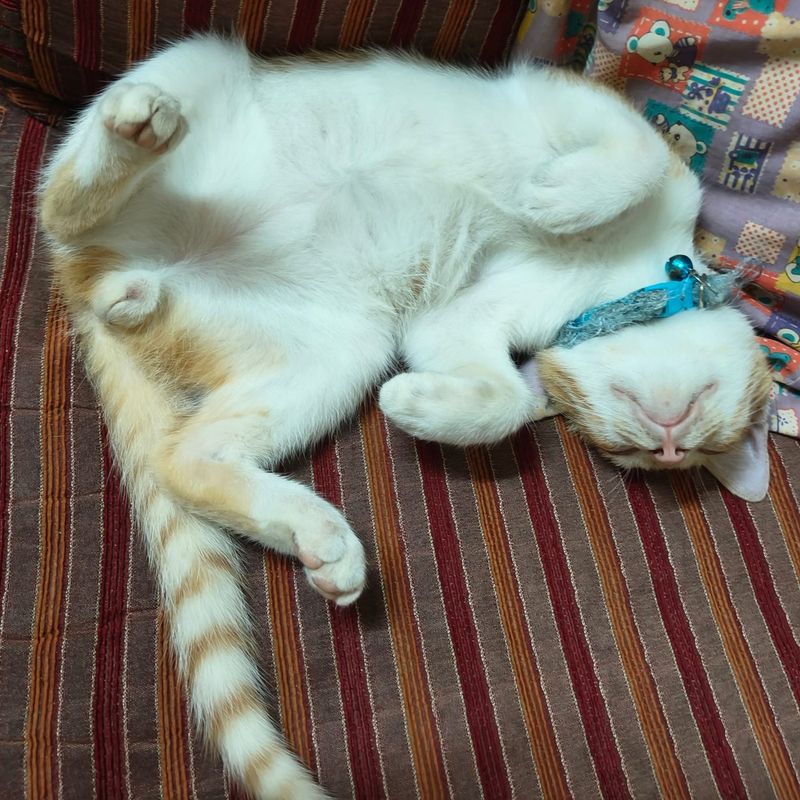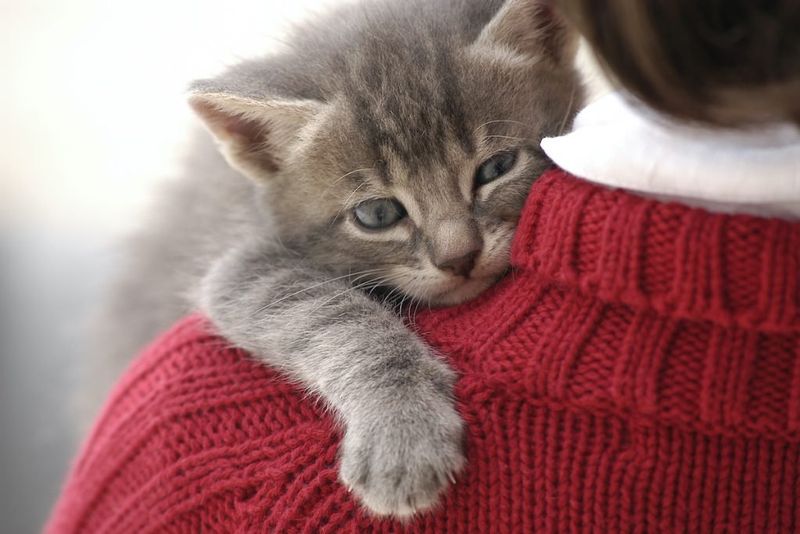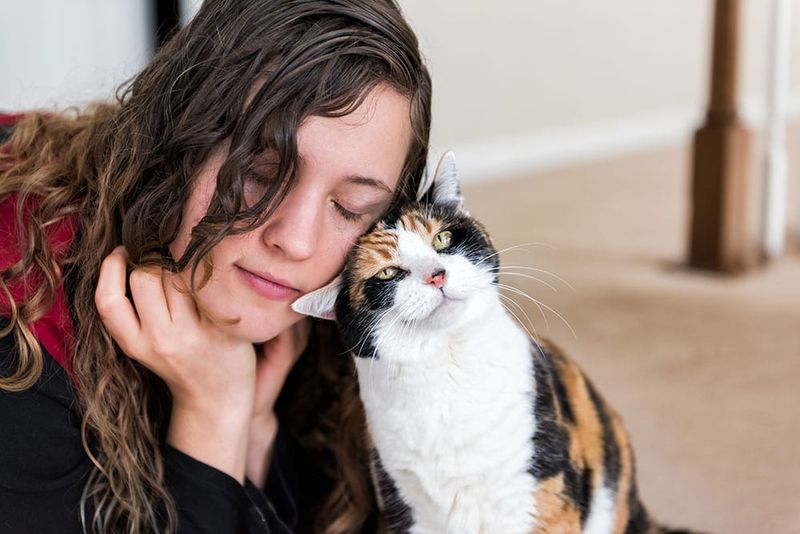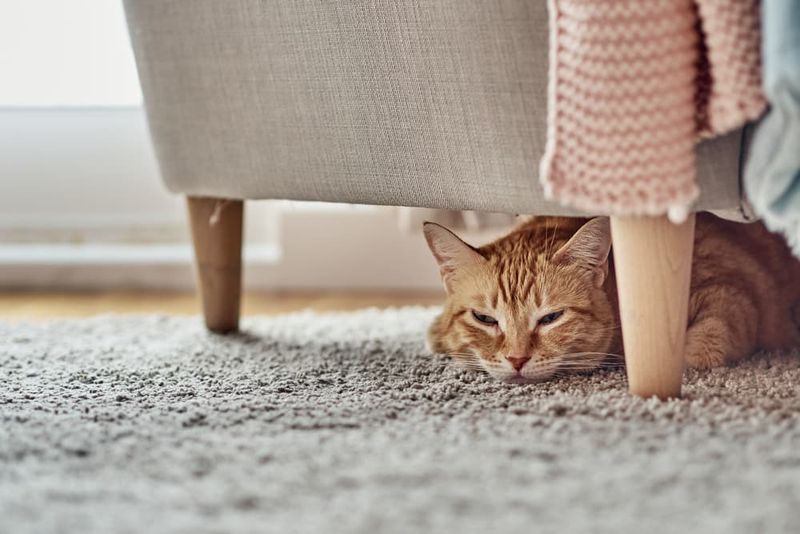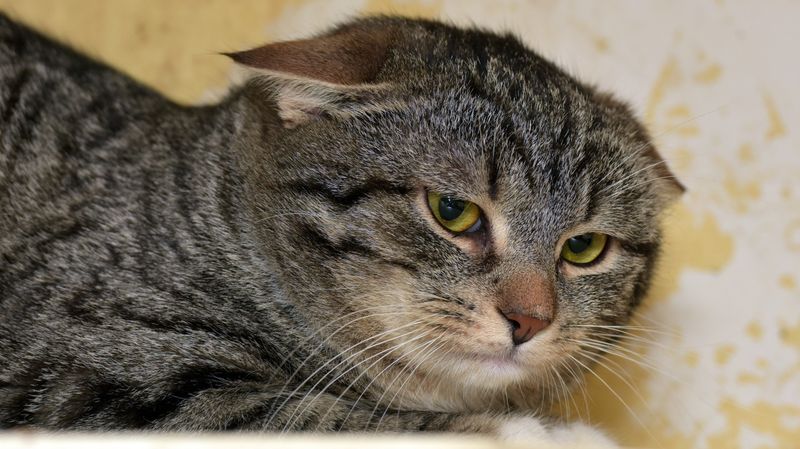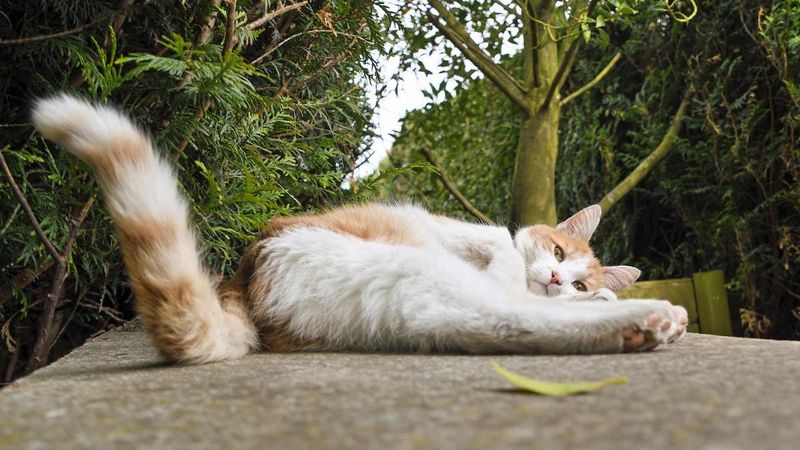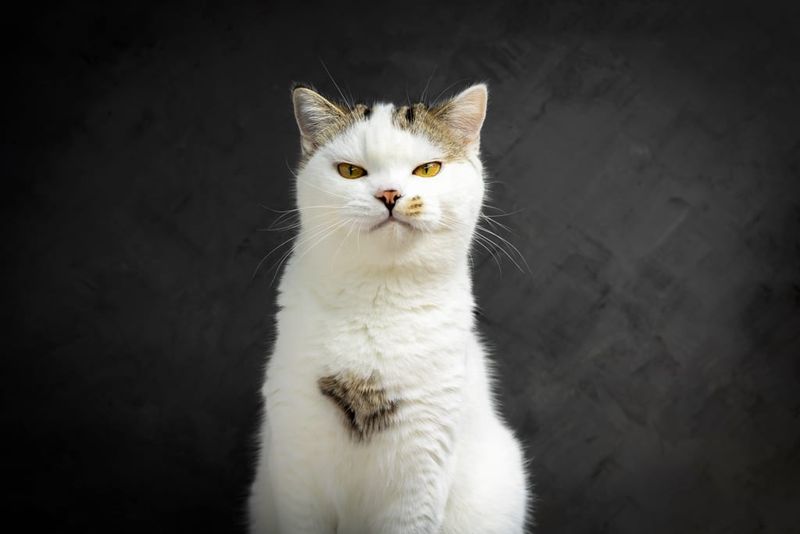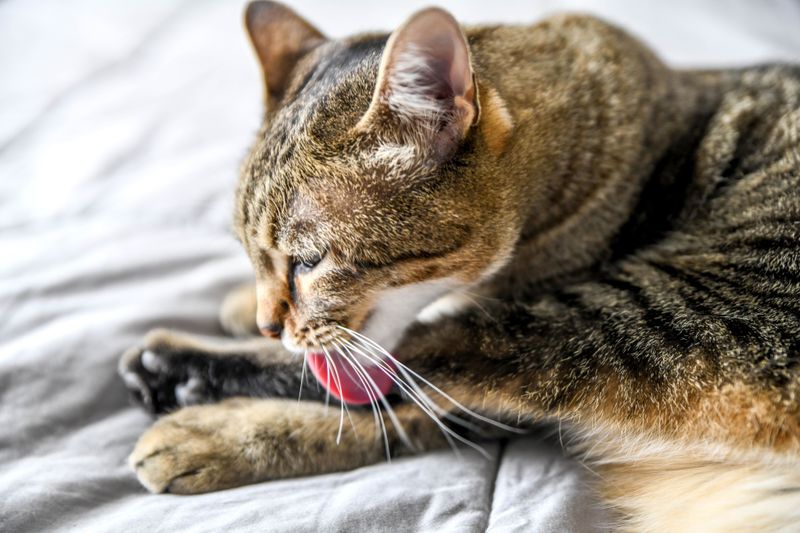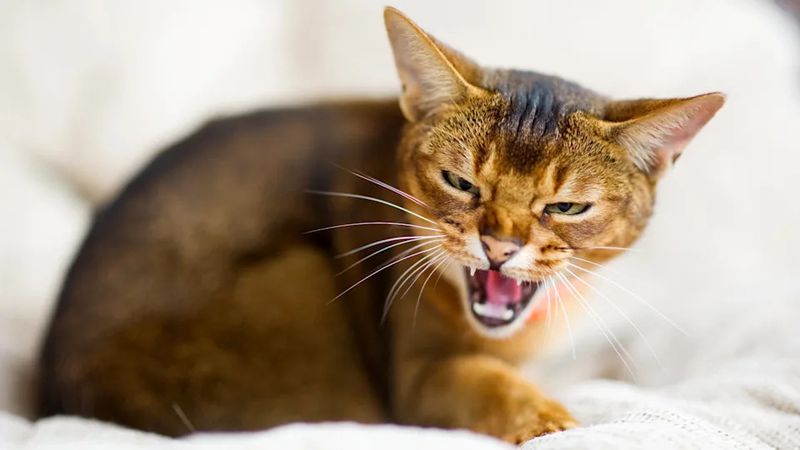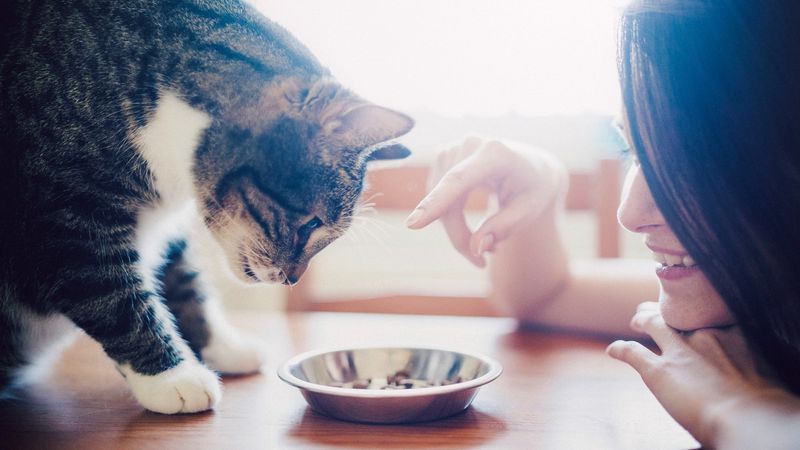📖 Table of Content:
- 1. Slow Blinks Mean Deep Trust
- 2. Bringing You ‘Gifts’ Shows You’re Family
- 3. Tail Position Reveals Deep Comfort
- 4. Kneading Your Lap Shows Childhood Comfort
- 5. Exposing Their Belly Demonstrates Vulnerability
- 6. Following You From Room to Room Shows Attachment
- 7. Head-Butting Marks You As Their Territory
- 1. Hiding Under Furniture Shows Insecurity
- 2. Flattened Ears Signal Distress
- 3. Tail Flicking Reveals Irritation
- 4. Avoiding Eye Contact Shows Distrust
- 5. Excessive Grooming Indicates Stress
- 6. Hissing Or Growling Signals Fear
- 7. Refusing Treats From Your Hand Shows Boundary Issues
Cats are often misunderstood as aloof creatures, but they actually form deep bonds with their human companions. Understanding your feline friend’s behavior can help strengthen your relationship and ensure they feel secure in your home. Let’s explore 7 telltale signs that your cat has formed a lifelong bond with you, along with 7 indicators that they might need more space to build trust.
1. Slow Blinks Mean Deep Trust
When your cat looks at you and slowly closes their eyes, they’re sending a powerful message. This gesture, often called a ‘cat kiss,’ indicates they feel completely safe in your presence. Cats are vulnerable when they close their eyes, so this behavior shows extraordinary trust.
You can respond by slow-blinking back, creating a special communication bridge between you two. Many cat behaviorists consider this one of the strongest signs of feline affection.
The next time your furry friend gives you those dreamy slow blinks, know that in cat language, they’re basically saying ‘I love you.’
2. Bringing You ‘Gifts’ Shows You’re Family
Finding a toy mouse or even a real one by your bedside might seem gross, but it’s actually a compliment! Your cat views you as part of their family and wants to share their hunting success with you. This behavior stems from their instinct to teach hunting skills to their young.
Female cats especially demonstrate this behavior, though males do it too. Rather than being disgusted, try to show appreciation for their efforts—even if you’re secretly grossed out.
This gift-giving ritual signals that your cat considers you worthy of their hard-earned prizes and wants to contribute to your wellbeing.
3. Tail Position Reveals Deep Comfort
A cat’s tail works like an emotional barometer, and when it’s pointed straight up with a slight curve at the tip while approaching you, that’s the feline equivalent of a beaming smile. This upright tail position is reserved for those your cat truly adores and feels completely at ease around.
Some cats even wrap their tails around your leg or arm like a furry hug. This physical contact serves as a way of marking you with their scent and claiming you as their own.
Pay attention to this tail language—it’s one of the most reliable indicators that your cat has formed a solid bond with you.
4. Kneading Your Lap Shows Childhood Comfort
That rhythmic pushing of paws against your lap—sometimes called ‘making biscuits’—is a behavior cats learn as kittens while nursing. When your adult cat kneads on you, they’re displaying a level of comfort that takes them back to their earliest days of security and contentment.
The kneading motion releases endorphins in your cat’s brain, creating feelings of pleasure. They only perform this vulnerable behavior with someone they completely trust.
Even though those tiny claws can sometimes hurt, consider kneading one of the highest compliments your cat can give you—they’re treating you like their mother!
5. Exposing Their Belly Demonstrates Vulnerability
A cat’s belly is their most vulnerable area, containing vital organs with minimal protection. When your feline friend rolls over and shows you their tummy, they’re demonstrating extraordinary trust in your relationship.
Contrary to popular belief, this isn’t always an invitation for belly rubs—many cats display their bellies as a sign of trust but prefer you admire rather than touch. Each cat has unique preferences about belly contact.
The belly exposure ritual represents your cat literally laying their life in your hands, a profound gesture that shows they view you as their safe haven in an often unpredictable world.
6. Following You From Room to Room Shows Attachment
Your feline shadow who trails you from the kitchen to the bathroom to the bedroom isn’t just being nosy—they’re showing deep attachment. Cats are naturally curious creatures, but when they consistently choose your company over solitude, it signals strong bonding.
This behavior indicates they feel safest when near you and don’t want to miss any potential interaction opportunities. Some cat behaviorists call this ‘sociable shadowing,’ a sign of secure attachment.
While it might occasionally feel like an invasion of privacy, your cat’s constant companionship reveals they’ve chosen you as their favorite person in the world.
7. Head-Butting Marks You As Their Territory
That gentle bump of your cat’s head against your hand, face, or leg—called bunting—serves a dual purpose in your relationship. Your cat has scent glands on their head that release pheromones during this contact, essentially marking you as their territory.
Beyond claiming you, head-butting represents a sign of affection and trust. Cats only head-butt individuals they consider part of their trusted inner circle.
When your kitty gives you these little nudges, they’re creating a shared scent profile between you both, strengthening your bond while telling other cats that you belong together. It’s their way of saying ‘you’re mine.’
1. Hiding Under Furniture Shows Insecurity
A cat who spends most of their time concealed under beds or behind furniture isn’t just being mysterious—they’re expressing discomfort or fear. This behavior often indicates they haven’t yet established enough trust to feel secure in open spaces around you.
Recent changes in the household, like new pets, visitors, or even furniture rearrangement, can trigger this hiding response. Cats need predictability and routine to feel safe.
Rather than forcing interaction, create quiet opportunities for positive association by sitting nearby and speaking softly. Patience is key—some cats, especially those with traumatic backgrounds, may need weeks or months to build confidence.
2. Flattened Ears Signal Distress
When your cat’s ears press flat against their head during interaction with you, they’re displaying a clear warning sign. This ear position indicates fear, anxiety, or aggression—all signals that your relationship needs work.
Other accompanying body language might include a puffed tail, arched back, or dilated pupils. These are defensive postures your cat adopts when feeling threatened.
Back off immediately when you notice flattened ears, giving your cat space to decompress. Forcing interaction during these moments only reinforces negative associations with you. With consistent respect for their boundaries, many cats gradually learn to keep their ears in a more relaxed, forward position around trusted humans.
3. Tail Flicking Reveals Irritation
A rapidly flicking or thumping tail isn’t your cat keeping rhythm to music—it’s their way of communicating growing annoyance. Unlike the gentle swaying that indicates curiosity, sharp tail movements signal your cat is reaching their tolerance limit during an interaction.
Many cat owners misinterpret this signal and continue petting, leading to potential scratches or bites. Learning to recognize this early warning system helps prevent negative encounters that damage trust.
When you notice tail flicking, immediately stop what you’re doing and allow your cat to reset. Respecting these boundaries consistently shows your cat you understand their communication, building a foundation for deeper bonding.
4. Avoiding Eye Contact Shows Distrust
Cats who consistently look away when you try to make eye contact are sending a clear message about their comfort level. Direct staring is threatening in cat language, but comfortable cats will engage in brief, relaxed eye contact with trusted humans.
Avoidant behaviors often stem from negative past experiences or lack of proper socialization. Some cats need months of positive interactions before they’ll feel secure enough for eye contact.
Try sitting near your cat without demanding attention, occasionally blinking slowly in their direction without staring. This gentle approach demonstrates you respect their boundaries while offering friendship on their terms—a strategy that often wins over even the most hesitant felines.
5. Excessive Grooming Indicates Stress
When your cat obsessively licks until bald patches appear, they’re displaying a feline stress response that requires attention. This behavior, called psychogenic alopecia, often develops when cats feel anxious about their environment or relationships, including with their humans.
Overgrooming releases endorphins that temporarily soothe your cat’s anxiety, creating a harmful cycle. Look for patterns—does the behavior increase when you approach or when certain family members are present?
Creating predictable routines and quiet spaces where your cat can retreat helps reduce this stress response. For severe cases, consult your veterinarian, as medication combined with behavior modification may be necessary to break the cycle.
6. Hissing Or Growling Signals Fear
These vocal warnings represent your cat’s last-resort communication before physical defense. Contrary to popular belief, cats don’t hiss or growl out of spite—these sounds indicate genuine fear or perceived threat.
A cat who regularly vocalizes this way around you is clearly communicating they don’t yet feel safe. The triggers might be subtle—perhaps your movements are too sudden or your voice too loud for their comfort level.
Rather than taking it personally, view these sounds as valuable feedback about your relationship’s current state. Step back, lower your energy, and consider consulting with a feline behaviorist who can identify specific triggers causing your cat’s defensive response.
7. Refusing Treats From Your Hand Shows Boundary Issues
A cat who won’t accept food directly from you is demonstrating significant trust issues that require gentle persistence to overcome. Food acceptance represents a vulnerable moment for cats—they must lower their guard to eat, making it a key indicator of relationship comfort.
Start by placing treats near you, gradually decreasing the distance over days or weeks. Avoid staring directly at your cat during these offerings, as this can feel threatening from their perspective.
For especially hesitant cats, try using a wooden spoon or stick to offer treats, creating distance that feels safer. Celebrate small victories—even if it takes months before your cat feels secure enough to eat from your palm.
